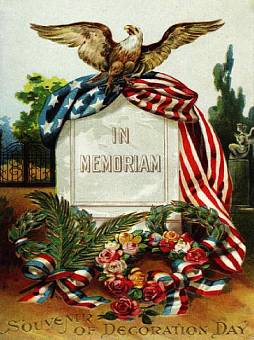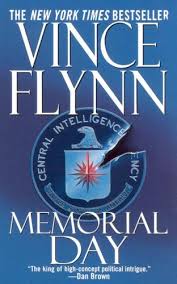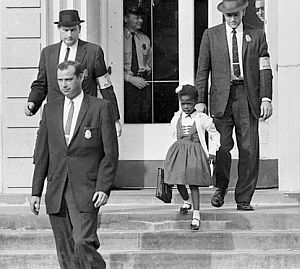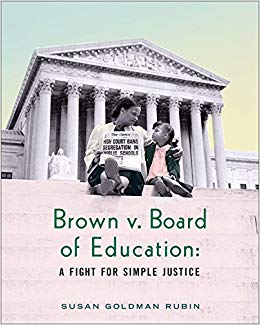May 1 — May 15, 2019
History Matters
Showing our children that their past is prelude to their future
 Ten years after the devastating terrorist attacks of September 11, 2001
Ten years after the devastating terrorist attacks of September 11, 2001  that took the lives of approximately 3,000 people in New York, Washington DC and Pennsylvania, the mastermind of the diabolical assault, Osama bin Laden, was found, and killed. U.S. Special Forces carried out a daring raid on his secret compound in Abbottabad, Pakistan in 2011 where bin Laden and his cadre of minions were hiding out. The unprovoked 9/11 assaults were carried out by terrorist hijackers who commandeered four U.S. passenger planes; two were crashed into the 110-story Twin Towers in New York City, a third hit the Pentagon in Washington DC, and passengers aboard a fourth fought back against the bombers aboard their plane as it tumbled into a field in Pennsylvania.
that took the lives of approximately 3,000 people in New York, Washington DC and Pennsylvania, the mastermind of the diabolical assault, Osama bin Laden, was found, and killed. U.S. Special Forces carried out a daring raid on his secret compound in Abbottabad, Pakistan in 2011 where bin Laden and his cadre of minions were hiding out. The unprovoked 9/11 assaults were carried out by terrorist hijackers who commandeered four U.S. passenger planes; two were crashed into the 110-story Twin Towers in New York City, a third hit the Pentagon in Washington DC, and passengers aboard a fourth fought back against the bombers aboard their plane as it tumbled into a field in Pennsylvania.
For more information: The Grateful American Book Prize recommends Live Aware, Not in Fear: The 411 After 9-11, A Book for Teens by Donna Wells and Bruce C. Morris.
****
 We remember the veterans who fought and died for our country
We remember the veterans who fought and died for our country  on Memorial Day, each year, at the end of May.
on Memorial Day, each year, at the end of May.
But, the original observance was on May 5, 1865, and it was called Decoration Day. It was established so the nation could pay its respects to the soldiers who lost their lives in the Civil War. Relatives, friends and neighbors “decorated” their graves with flowers. Many years and too many wars later, the day was renamed, and in 1971 Congress turned Memorial Day into an official national holiday to be observed on the last Monday in May. It created a three-day holiday weekend that has become the unofficial start of summer.
The Grateful American Book Prize recommends the engrossing Memorial Day by Vince Flynn, to better understand the holiday.
****
 Before the War Between the States, America had already
Before the War Between the States, America had already![]() been involved in three international conflicts. The Revolutionary War established the country’s independence and the War of 1812 reaffirmed our sovereignty from Great Britain. And, then there was the Mexican-American War from 1846 to 1848. On May 13, 1846, Congress declared war on Mexico at the behest of President James K. Polk. The cause was what President Polk called “manifest destiny,” or the United States’ right to expand its western boundaries. In the end, the nation extended to the Pacific Ocean, including parts of Oklahoma, New Mexico, Arizona, Nevada, California, Utah and Colorado. But, it was a costly war in which 11,300 American soldiers perished.
been involved in three international conflicts. The Revolutionary War established the country’s independence and the War of 1812 reaffirmed our sovereignty from Great Britain. And, then there was the Mexican-American War from 1846 to 1848. On May 13, 1846, Congress declared war on Mexico at the behest of President James K. Polk. The cause was what President Polk called “manifest destiny,” or the United States’ right to expand its western boundaries. In the end, the nation extended to the Pacific Ocean, including parts of Oklahoma, New Mexico, Arizona, Nevada, California, Utah and Colorado. But, it was a costly war in which 11,300 American soldiers perished.
For more information: The Mexican-American War by John DiConsiglio; a good book for young readers to interpret the times and causes of the fight, according to the Grateful American Book Prize.
****
 On May 17, 1954, the landmark Brown v. Board of
On May 17, 1954, the landmark Brown v. Board of  Education was decided by the U.S. Supreme Court. It declared that separate educational facilities for black and white students were “inherently unequal,” even if their physical accommodations were designed to be tangibly equal. Thurgood Marshall, who later became the first African American jurist to be appointed to the Supreme Court, argued the ground breaking case before the court. The story behind Brown v. Board of Education is a must for young learners in order to understand what it means to be a responsible citizen of the U.S.
Education was decided by the U.S. Supreme Court. It declared that separate educational facilities for black and white students were “inherently unequal,” even if their physical accommodations were designed to be tangibly equal. Thurgood Marshall, who later became the first African American jurist to be appointed to the Supreme Court, argued the ground breaking case before the court. The story behind Brown v. Board of Education is a must for young learners in order to understand what it means to be a responsible citizen of the U.S.
For more information, read Susan Goldman Rubin’s Brown v. Board of Education: A Fight for Simple Justice.
History Matters is a biweekly feature courtesy of The Grateful American Book Prize.




